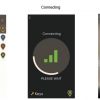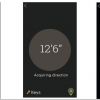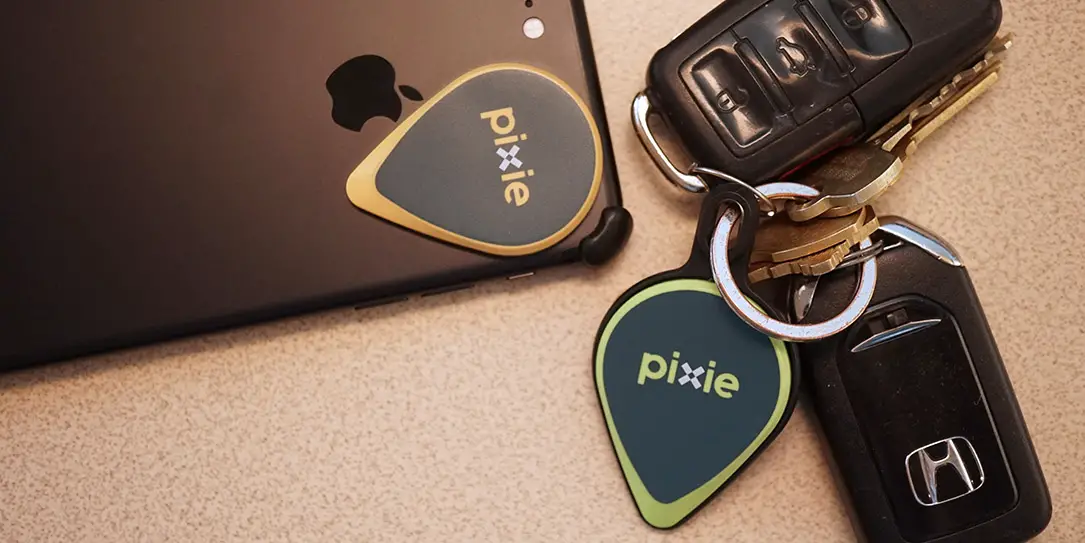Losing your everyday-use small items and gadgets can be a pain in the butt, especially when you need something quickly. Keys, wallets, remotes, and phones can easily be misplaced or fall into the nooks and crannies of your home. The Pixie Point system is here to try and help track down those lost items quickly. There are other competitors on the market and they have each brought something to the table. The Pixie Point system is hoping to be the final solution in helping you keep track of those things you hate losing.
Worth noting for Android users before you continue on reading…currently Pixie Point is iOS only but Android is coming.
Specifications
- Size: 47mm x 35mm x 3.4mm
- Range: Up to 150 feet outdoors. Typical indoor performance 30-50 feet
- Accuracy: Within 1 foot
- Lifetime: non-replaceable battery provides over 12 months in typical usage
- Water and dust resistance proof to IP67 standards
- Connects to dedicated iOS 9 or later app with an intuitive, multi-media user
interface - Unique augmented reality interface that features Pixie Dust that magically
swarms to show where an item is in the room. - Three radio technologies including. Bluetooth Low Energy allowing base Pixie Points to communicate with smart devices. Proprietary Pixie signaling protocols that enable Pixie Points to communicate with one another using the 2.4GHs ISM frequency band and UWB PHY in the 4GHz range.
What’s In The Box
- 2-4 Pixie Point beacons
- 2 keychain or bag mounts
- 3 alcohol pad cleaners
- 3 spare sticky backs
- Flexible sticky back for curved items like remotes
- Quick start guide
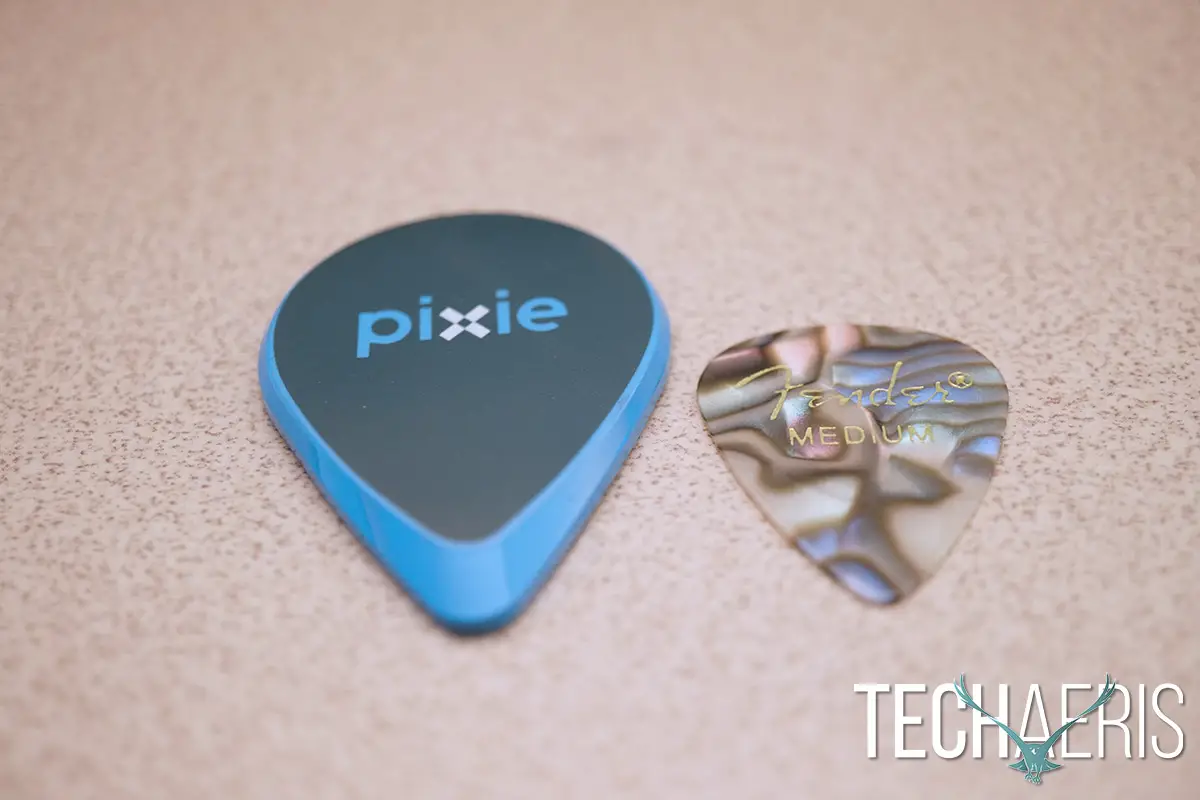
Design
Guitar picks come to my mind when first opening the Pixie Point box. Larger and thicker guitar picks and very colorful to boot, although I’m sure they’re modeled more after a map pin point. Made from a sturdy plastic material with electronics embedded inside, the Points feel solid in the hand and do not feel cheap at all. While the design is nice, there were some things I particularly didn’t like about the Points.
For the whole system to work, you’ll have to pick a Point to make the master which has to live on your phone. You can either adhere the Point on the phone itself or onto the case your phone is in (the company does offer their own case). This makes entire sense and is essential for getting the most out of the experience but the points are much thicker than I’d like. The thickness can make your phone a little wobbly but mostly there’s a giant colorful guitar pick on the back of it. Now, I know aesthetics is a highly subjective thing so for what it’s worth, I didn’t much like the look the Pixie gave to my iPhone.
I would have much preferred a much slimmer version that blended in with the iPhone aesthetic more and had less branding and color. I know the company could be limited by the current technology and possibly couldn’t make it any thinner than they did, but for future models, it’s worth looking into. Overall, the design is nice, I don’t mind the Points on my keys and other things I’m tracking, it’s just the master Point on the back of the phone that gives it a giant wart-look.
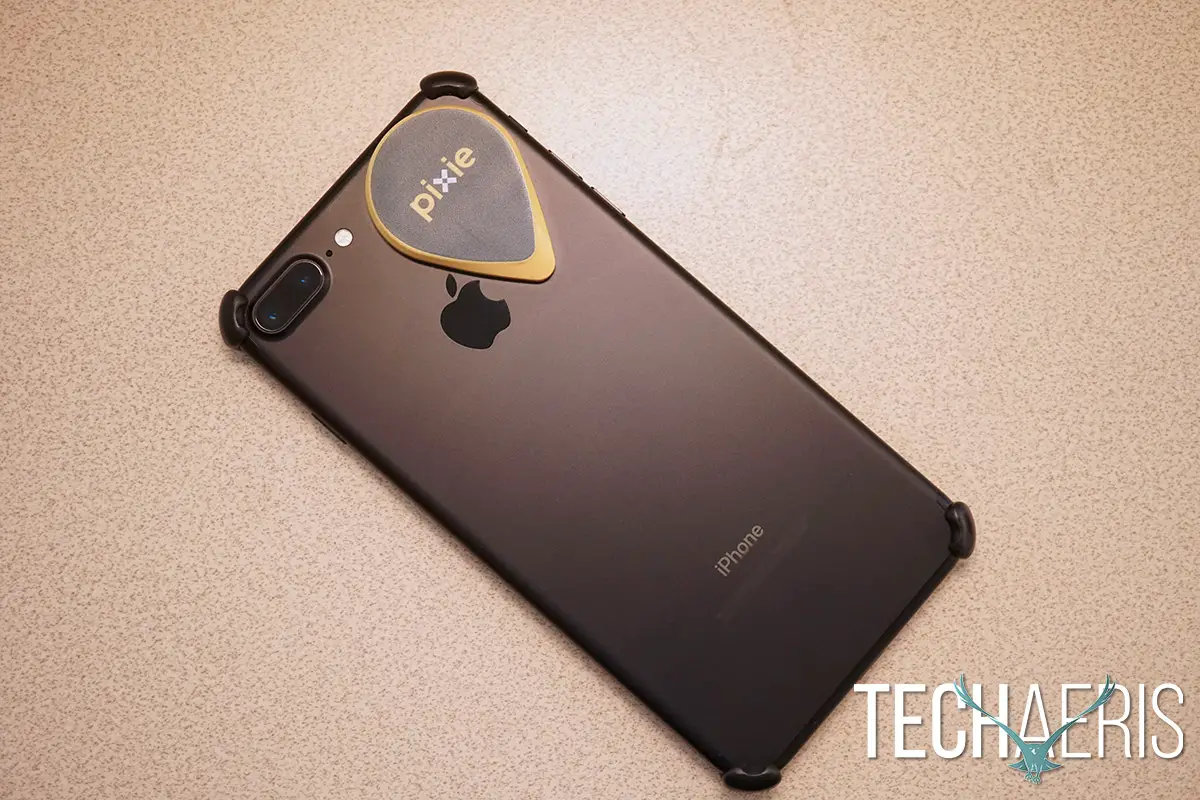
Ease of Use/Software
There are a few steps to go through in order to get setup properly with the Pixie Point system, but it isn’t difficult at all. The first order of business is to download the Pixie app from the App Store on your iPhone and then pair your first Point which will become your master Point that lives on your phone. Once you open the app, it will run you through the setup process for the Point and then ask you to place it on the phone. Something worth noting is, you should keep all other Points a good distance away from any Points you are attempting to pair so the app doesn’t accidently grab the wrong Point. The company also recommends you have the phone and the Point side by side when pairing.
You can name each Point whatever you like and you can have up to 8 Points paired with the Pixie app, which includes the one on the phone. Once you have all your Points paired you’re all set and ready to go. Upon your first search attempt, the app will walk you through a tutorial that you should pay attention to in order to make the best use of this experience. Before you can start looking and finding the lost Point, you’ll need to map the room. Pixie creates a 30-50 foot digital map of the area you’re standing in and triangulates the position between the Point on your phone and the lost Point.
Once the map is created the Point’s start communicating and the app shows you which way to walk. If you are far from your item and the signal is too weak, the scan may not start or
complete correctly. In this scenario there is a second method to generate the map:
- Pixie will ask you to begin to walk in an L shape to find a better signal
- At a certain point, Pixie will ask you to turn left or right
- Turn 90° when the room settings allow and continue to walk
- Keep the phone pointing forward in the direction you are walking
- Once the map is calculated, the Pixie app plays a sound and switches to the Show It mode
Once the master point has located the lost Point you will be prompted to Show It, at that point you walk the direction of the arrow and once in range “Pixie Dust” will show up on your screen. That is the area where your lost item is and all you have to do is walk over and pick it up. The Points work through walls and other objects so if you left your keys in between the sofa cushions, Pixie will find them there.
Setting up and using the system isn’t hard at all. It’s very easy to use, though I do strongly advise you follow instructions for the best experience.
Performance
The Pixie Point system works really well and was very useful when locating items. You do have to be in range in order to locate items and the company says that’s typically 30-50 feet. So if you don’t have any luck finding your lost item in one room, you may have to move to another room and do a mapping of that room too. The company does state that the range outdoors could be up to 150 feet which does make sense since you typically don’t have walls and other furnishings in the way of the signals.
Battery Life
There is no replaceable battery in the Points and they’re expected to last at least 12 months with warranty. So once the battery life has been reached, you’ll have to replace your Points. Another worthy note is, battery life is also contingent on how often you use the Points to locate each other.
Price/Value
There are 2 versions of the Pixie Point system, a 2-pack ($49.99USD) and a 4-pack ($99.99USD). That’s basically $24.99USD per Point which I think is priced fairly and the value will be dependent on how often you lose stuff and how often you use the system. If you’re a person that misplaces items a lot then this could be a really great solution.
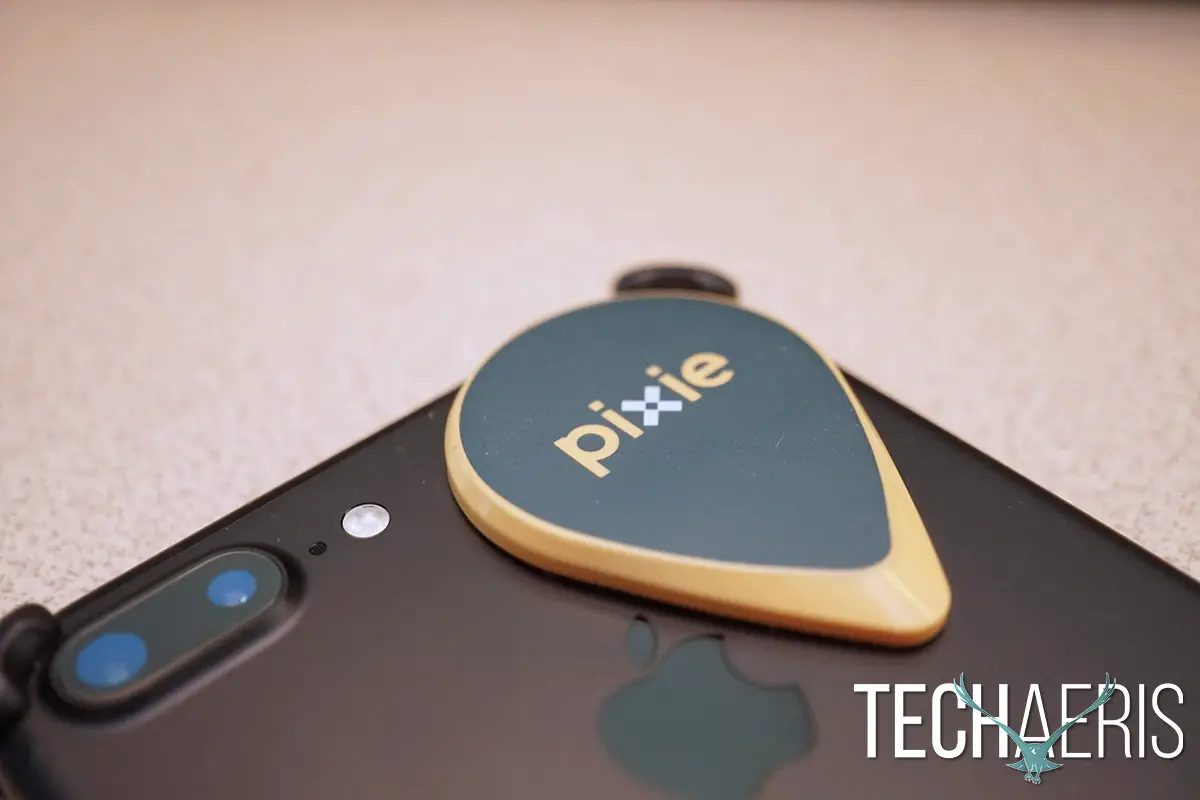
Wrap Up
The Pixie Point system works as advertised and is probably one of the best lost item locating systems I’ve used. It falls short (for me) in the design and look, as having a very large Point on the back of the phone wasn’t at all pleasant. With that being said, some people could be entirely unaffected by that and may find that the service the Pixie provides is worth the bulk and look. Overall the system and experience work great, the rest of it is aesthetics, which is very subjective.
[rwp-review id=”0″]

